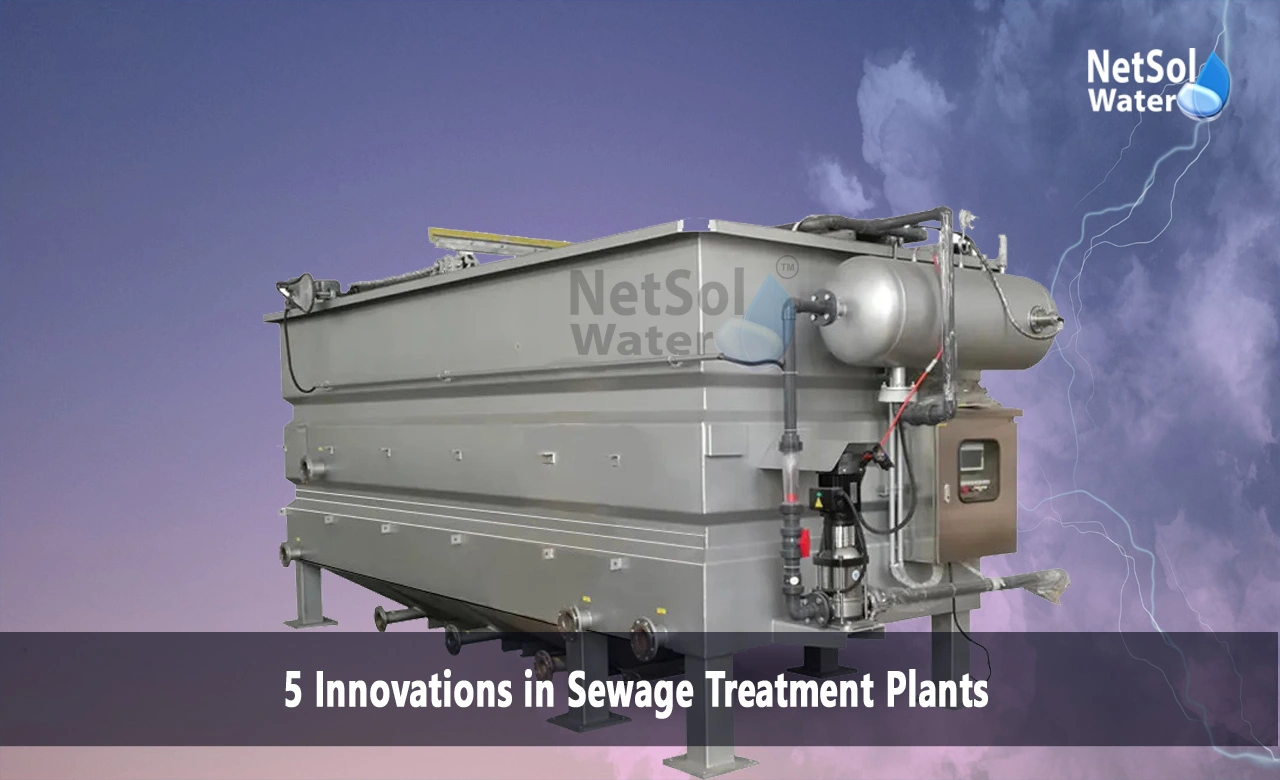What are the Top 5 Innovations in Sewage Treatment Plants?
Sewage treatment plants preserve our health by purifying wastewater before it returns to nature. Wastewater management has progressed from basic septic systems to complex treatment plants. These have evolved substantially throughout the years. Today we look into innovations transforming sewage handling.
1. Membrane Bioreactor (MBR) Technology
Membrane bioreactor technology combines classic biological treatment with membrane filtration. This innovation creates incredibly clean water.
How it works:
MBR systems use membranes with small pores to catch solid particles and certain germs. Simultaneously helpful bacteria break down organic materials in the wastewater. This strategy leads in higher water quality.
Benefits of MBR:
· MBR plants treat the same volume of wastewater in less space than conventional plants.
· The treated water is clean enough for reuse in irrigation or industrial purposes.
· MBR systems generate less extra sludge lessening disposal difficulties.
Challenges and potential developments:
Membrane fouling requires constant cleaning and maintenance. Researchers propose new membrane materials and cleaning ways to overcome this issue. As the technology advances we'll see widespread deployment of MBR systems in sewage treatment plants worldwide.
2. Anaerobic Digestion and Biogas Production
Recent advances have made anaerobic digestion more efficient and valuable. This procedure uses microorganisms to break down organic materials without oxygen creating biogas a green energy source.
The anaerobic digesting process:
1. Sealed tanks capture organic waste from sewage.
2. Bacteria break down the trash and produce biogas.
3. The captured biogas generates power or heat.
Innovations in anaerobic digestion:
· Co-digestion blends sewage sludge with other organic wastes to boost biogas yield.
· Advanced monitoring systems enhance the digestive process.
· Biogas upgrading methods purify biogas into biomethane for input into natural gas grids.
Impact on sewage treatment plants:
Anaerobic digestion turns sewage treatment plants from energy consumers to producers. Many facilities generate enough biogas to power their activities. Some even sell extra electricity back to the grid. This minimizes operational expenses and contributes to a sustainable energy future.
3. Nutrient Recovery Systems
Innovative nutrient recovery technologies turn "waste" nutrients like nitrogen and phosphorus into usable goods.
Benefits of nutrient recovery:
· It reduces the demand for mined phosphorus a scarce resource.
· Less nutrients dumped into waterways minimizes the probability of algal blooms.
· Recovered nutrients generate additional revenue sources offsetting treatment expenses.
Challenges and future directions:
Nutrient recovery technology continue to evolve. Researchers work on enhancing recovery efficiencies and creating novel applications for recovered nutrients. As these technologies become cost-effective additional sewage treatment plants will deploy them worldwide.
4. Advanced Oxidation Processes (AOPs)
Advanced oxidation procedures employ powerful oxidizing agents to break down complex organic molecules that older methods fail to remove.
How AOPs work:
AOPs generate reactive species like hydroxyl radicals to oxidize pollutants. Common ways include:
· UV/hydrogen peroxide treatment
· Ozonation
· Fentons reagent
· Photocatalysis
Target contaminants:
AOPs effectively treat:
· Pharmaceutical residues
· Personal care products
· Industrial chemicals
· Pesticides and herbicides
Advantages of AOPs:
· They cure a wide range of contaminants.
· AOPs often accomplish full mineralization of pollutants.
· Unlike certain treatments AOPs don't develop new waste streams.
Current limits and continuing research:
AOPs can be energy-intensive and expensive to install on a wide scale. Researchers concentrate on making these processes more efficient and cost-effective. They design novel catalysts enhance reaction conditions and combine AOPs with other treatment approaches for synergistic benefits.
5. Smart Sewage Treatment Plants
Internet of Things (IoT) technology and artificial intelligence use advanced sensors data analytics and automation to optimize operations in real-time.
Key aspects of smart treatment plants:
· Sensors offer constant data on water quality flow rates and equipment performance.
· AI algorithms forecast when equipment requires maintenance.
· Treatment processes automatically modify based on incoming wastewater characteristics.
· Plant personnel monitor and control systems remotely.
Benefits of smart systems:
· Optimized processes minimize energy usage and chemical use.
· Real-time monitoring assures consistent compliance with environmental regulations.
· Predictive maintenance and better operations contribute to cost reductions.
· Automated systems promote safety by reducing human intervention in hazardous places.
Challenges and potential developments:
Implementing smart systems in existing plants can be hard and expensive. Cybersecurity and data privacy problems exist. However as technology improves and costs reduce more sewage treatment plants will embrace these smart solutions. The future may see fully autonomous treatment plants requiring minimum human intervention.
Conclusion
From harnessing microbes to utilizing AI these advancements make wastewater treatment more efficient sustainable and valuable.As we face water scarcity climate change and environmental protection challenges continuing innovation in sewage treatment remains necessary. New technologies establish a sustainable future for wastewater treatment by turning waste into resources lowering environmental effect and restructuring operations.
To explore customised commercial RO plants, Industrial RO plants, ETP or STP solutions for your needs in your areas and nearby regions, contact Netsol Water at:
Phone: +91-965-060-8473, Email: enquiry@netsolwater.com



